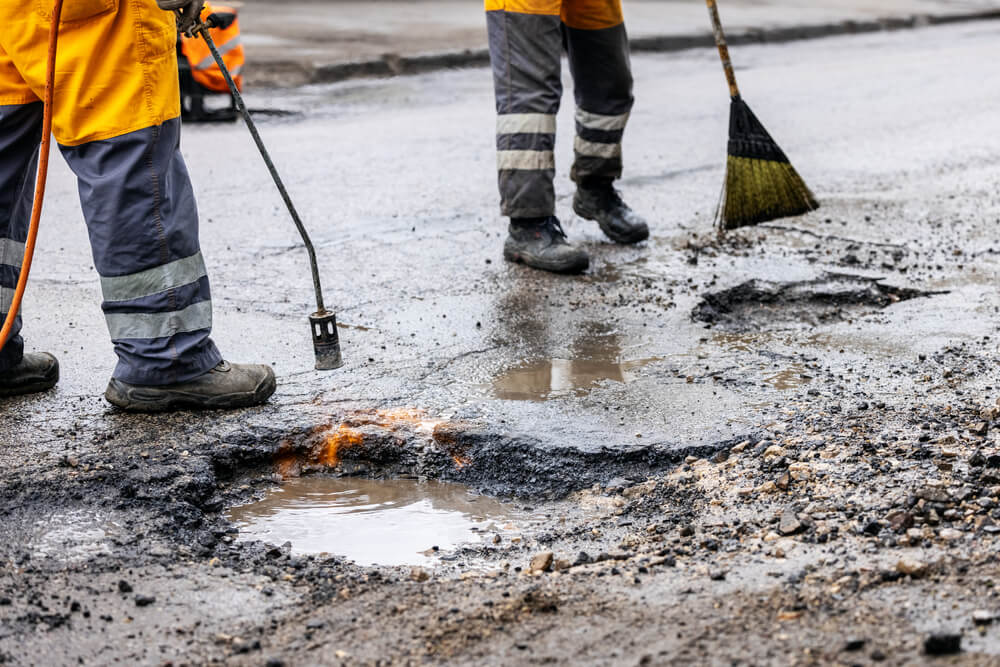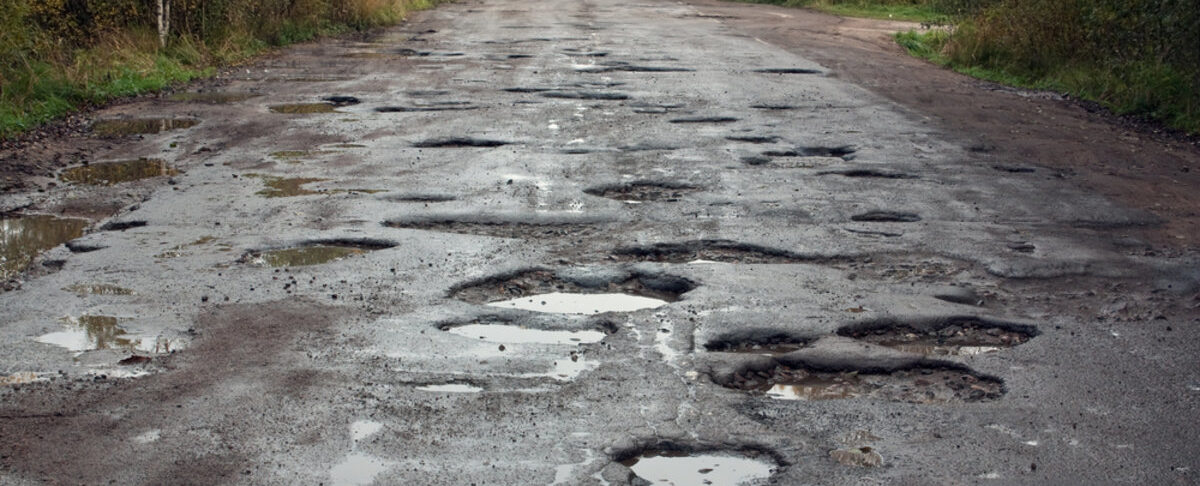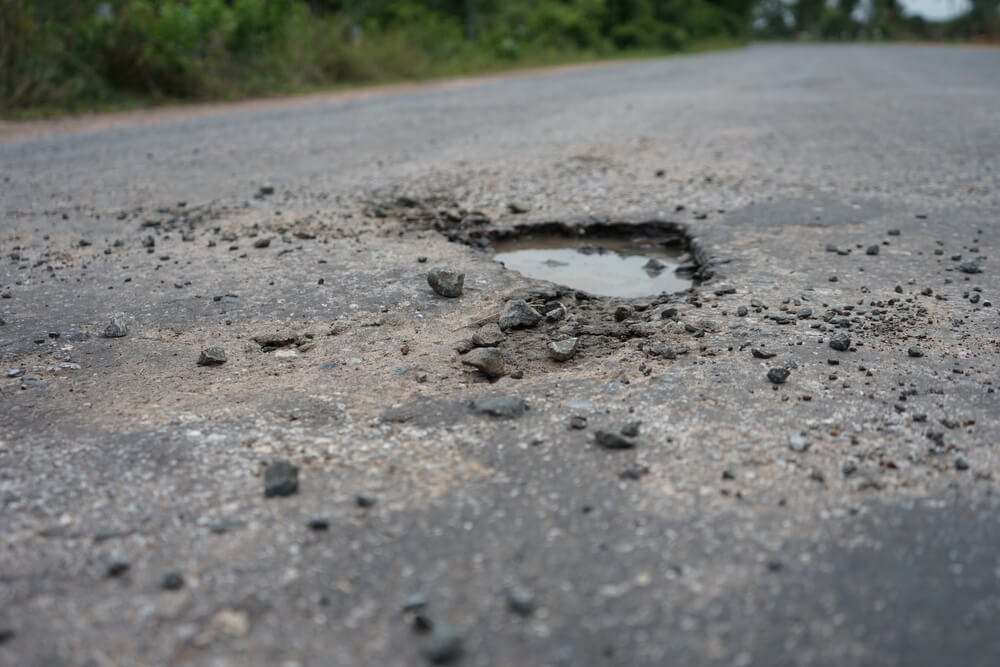Asphalt pavement is a popular choice for driveways, parking lots, and roadways in Minnesota due to its durability, cost-effectiveness, and aesthetic appeal. However, even with its many advantages, asphalt is not immune to damage, and one of the most common issues that property owners face is the formation of potholes. Potholes can be a nuisance, causing damage to vehicles, posing safety risks, and negatively impacting the overall appearance of the pavement. In this article, we will explore the causes of asphalt potholes in Minnesota and discuss preventive measures and repair options to maintain the integrity of your pavement.
The Basics of Asphalt Potholes
Potholes are depressions that develop on the surface of asphalt pavement. They usually start as small cracks or divots and gradually worsen over time, expanding into wider and deeper holes. When driving over a pothole, you may experience a sudden jolt or impact, which can be uncomfortable and potentially damage your vehicle. For property managers and facility owners, potholes can lead to structural damage, costly repairs, and even legal liabilities.
Causes of Asphalt Potholes in Minnesota
Understanding the underlying causes of asphalt potholes is essential in preventing their formation and minimizing the risks they pose. In Minnesota, where the climate can be harsh, several factors contribute to the development of potholes.
Freeze-Thaw Cycle
One of the primary causes of asphalt potholes in Minnesota is the freeze-thaw cycle. During the winter months, moisture from rain, snow, or ice can seep into small cracks or dents in the pavement. When the temperature drops below freezing, the trapped water freezes and expands, exerting pressure on the surrounding asphalt. As the frozen water thaws, it leaves behind gaps and weakened areas, eventually leading to the formation of potholes.
Heavy Traffic
The amount and type of traffic on the pavement also play a significant role in pothole formation. Heavy vehicles, such as trucks and buses, can exert more pressure on the asphalt, causing it to weaken and crack over time. Additionally, the repeated impact of traffic passing over existing cracks or weakened areas can further deteriorate the pavement, contributing to the development of potholes.
Poor Drainage
Inadequate drainage is another factor that can contribute to the formation of potholes. If water is not effectively drained from the pavement, it can accumulate and seep into the underlying layers, compromising their stability. Poor drainage can be caused by improper pavement design, clogged or damaged drainage systems, or the lack of proper grading to facilitate water runoff.
Age and Lack of Maintenance
Asphalt pavement ages over time, and without proper maintenance, it becomes more susceptible to pothole formation. Over time, the asphalt can deteriorate, lose its flexibility, and develop cracks. Regular maintenance, such as sealcoating and crack filling, helps protect the pavement from water infiltration and slows down the aging process. However, neglecting maintenance can accelerate the development of potholes.
Preventive Measures for Asphalt Potholes
While it may not be possible to entirely eliminate the risk of potholes, there are preventive measures that property owners can take to minimize their occurrence and prolong the lifespan of their asphalt pavement.
Regular Inspections and Maintenance
Performing regular inspections of the pavement allows you to identify and address any cracks or deterioration before they escalate into potholes. Inspect the pavement for signs of cracking, crumbling edges, or areas with poor drainage. Promptly repair any identified issues, such as filling cracks or sealing damaged areas, to prevent water infiltration and further pavement damage.
Proper Drainage Design
Ensuring proper drainage is crucial in preventing the formation of potholes. Adequate slope and grading should be incorporated during pavement construction to facilitate water runoff. Regularly clean and maintain drainage systems, such as catch basins and gutters, to prevent blockages and ensure efficient water flow.
Load Management
Managing the weight and frequency of heavy vehicles on the pavement can help minimize the risk of potholes. Consider implementing weight restrictions or alternate traffic routes for heavy vehicles to reduce the stress on the pavement. Additionally, spreading out the traffic load by staggering delivery schedules or implementing traffic flow management strategies can help minimize the concentrated impact on specific areas.
Seasonal Maintenance
In regions with harsh winters, it is essential to take additional measures to protect the pavement from the freeze-thaw cycle. Prioritize maintenance activities such as crack sealing and filling before the winter season to prevent water infiltration. Clear snow and ice promptly to avoid prolonged exposure to freezing conditions, which can exacerbate pavement damage.
Repair Options for Asphalt Potholes
Despite preventive measures, potholes can still develop over time. When addressing pothole repairs, it is crucial to choose the appropriate repair method based on the severity and extent of the damage.
Hot Mix Asphalt Repair
Hot mix asphalt repair is a common method used for repairing potholes. This involves cleaning the pothole, removing any loose debris, and applying hot asphalt mix into the hole. The hot asphalt is then compacted and leveled to create a smooth and seamless surface. Hot mix asphalt repair provides a long-lasting solution and is particularly effective in warmer weather conditions.
Cold Mix Asphalt Repair
In colder temperatures or situations where immediate repairs are necessary, cold mix asphalt repair can be used as a temporary solution. Cold mix asphalt is a premixed combination of asphalt, aggregate, and emulsion that can be applied directly to the pothole without the need for heating. While not as durable as hot mix asphalt, cold mix repairs can provide temporary relief until more permanent repairs can be made.
Patching and Overlay
For larger areas of pavement damage or extensive pothole formation, patching or overlaying the affected sections may be necessary. Patching involves removing the damaged asphalt and replacing it with new asphalt, ensuring a seamless transition between the patched area and the surrounding pavement. Overlaying, on the other hand, involves applying a new layer of asphalt over the existing pavement, reinforcing its integrity and providing a smooth surface.
Contact Richfield Blacktop for Pothole Repairs in Minnesota

Asphalt potholes pose risks to vehicles, pedestrians, and the overall integrity of the pavement. Preventive measures and regular maintenance are crucial in minimizing the formation of potholes. However, if you encounter potholes on your property in Minnesota, it is essential to address them promptly and effectively to prevent further damage.
Don’t let potholes compromise the functionality and appearance of your pavement. Contact Richfield Blacktop today for all your pothole repair needs in Minnesota.





